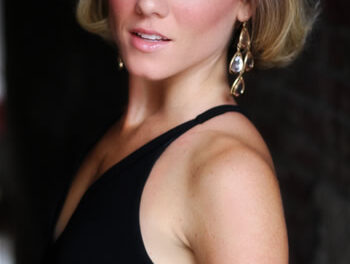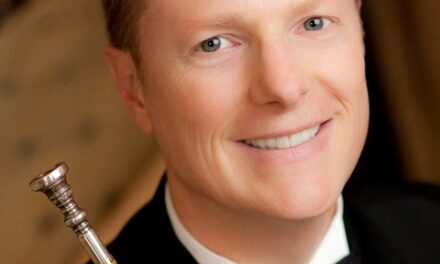Wintry weather made the choices of music director Dmitry Sitkovetsky’s first program of the New Year, “Italian Inspirations,” all the more welcome. Italy was captured in sound by three very different composers: the German J. S. Bach, the Russian Sergei Prokofiev, and the French Hector Berlioz. Most of the works brought one of the orchestra’s more reticent and subtle middle voices, the viola, front and center stage. The viola is a compromise between acoustics of the instrument and the physical limitations of the human body. In order to project as well as a violin or cello, a viola would have to be so large and unwieldy only a virtuoso orangutan could play it! Sitkovetsky’s guest soloist, Roberto Díaz, has been principal violist of the Philadelphia Orchestra and has been appointed president of the Curtis Institute in Philadelphia.
Bach’s Brandenburg Concerto No. 6 in B-flat Major opened the concert with only seven musicians on stage, making for very intimate chamber music. The important solo lines were shared by Díaz and Scott Rawls, the GSO’s principal violist. Assistant principal violist Maureen Michels and violist Eric Koontz were joined by two principal string players, cellist Beth Vanderborgh with double-bassist John Spuller and harpsichordist Nancy Johnston forming the continuo. The musicians set a fast pace for the outer allegros but there was never any sense of rushing just to get all the notes. There was true dialog between Díaz and Rawls as well as the rest of the ensemble. Díaz plays an early 1570s Amati, while Rawls plays a fine 1914 Ferrucio Varagnola viola. The contrast of color and timbre between the two instruments, as each exchanged high and low parts, was fascinating. Most live performances of the Brandenburg Concerto No. 6 on modern instruments that I have heard have been too bass heavy. The wonderfully light touch that the continuo players brought to their parts was a constant delight. Bravo! The middle slow movement was taken at a perfect tempo allowing the flowing and singing dialog between two soloists to unfold naturally. Bach’s original scoring called for two violas da gamba, which were replaced by violas for this concert.
Sitkovetsky’s judicious selection of five numbers from Prokofiev’s ballet Romeo and Juliet gave the Greensboro Symphony Orchestra ample opportunity to show off the strength of its principal players and sections as well as how tight-knit its ensemble playing has become under his direction. Eschewing a baton, Sitkovetsky carefully molded phrases and balanced with an ear for very refined and nuanced dynamics. I am sure the few minor instrumental slips I heard will disappear when the concert is repeated Saturday. This was a performance of great verve and sensitivity with memorable portraits in sound of the young Juliet and that wonderful Balcony Scene.
There is a dearth of great solo works for the viola. One of the finest is Berlioz’s Harold in Italy, symphony for viola and orchestra, Op. 16. Virtuoso violinist Niccolò Paganini had a wonderful viola and wanted Berlioz to compose a typical showpiece concerto. He was greatly disappointed when he saw the composer’s often more poetic and meditative score with “too many rests” for the soloist! It is in four movements and, more often than not, the soloist is reflecting upon a movement’s “action” rather than participating in it.
The Triad area has had several fine performances of Harold in Italy with violists Nobuko Imai and Burlington-native Chauncey Patterson of the Miami String Quartet. Roberto Díaz and Sitkovetsky collaborated to turn in one of the most fascinating interpretations heard yet.
One of the most striking features was Díaz’s daring use of some of the quietest pp playing that I have ever heard. War Memorial Auditorium is a notoriously uneven facility so this choice was brave indeed! I hope the sound could be appreciated in the balcony as much as it was in row H of the orchestra sections. Almost as astonishing was Sitkovetsky’s perfectly matching his soloist’s ever descending dynamics, all the while keeping the orchestra beautifully balanced. Berlioz’s every demand from the palette of orchestral and individual instrumental color was met. This was one of those magical evenings when all the elements for a superb performance seemed to just snap into place.
The brief “Meet the Artists,” held at the front of the stage after every Thursday concert. is always worth attending. Sitkovetsky and Díaz discussed the Chilean-born violist’s early music education. His father was a professional violist who had studied with the great William Primrose. Roberto and his siblings, Andrés Díaz (a cellist whose concerts with Spoleto Festival USA and Brevard Music Center are frequently reviewed by CVNC, and a sister studied music as part of their education. Both commented on the rapid growth of Youth Orchestras, which were almost non-existent throughout South America during Roberto’s youth.
A recommendation from composer-conductor Gunther Schuller led to Roberto’s father being appointed to the Atlanta Symphony during Robert Shaw’s directorship. After completing his musical education in America, including study at the Curtis Institute in Philadelphia, Roberto became a member in turn of four orchestras, including the Boston Symphony, and ended as principal violist of the Philadelphia Orchestra. He has recently been appointed president of the Curtis Institute.
There is a fascinating story behind Roberto Díaz’s current viola, which had belonged to William Primrose. Primrose’s father, an amateur violist had the Amati and his son used to sneak it out to play. Later Primrose was advised to switch from violin to viola so he went home and used his father’s viola throughout his career. It is believed construction of the viola was begun by Andrea Amati in the early 1570s and largely completed after his death by the luthier’s two sons.












